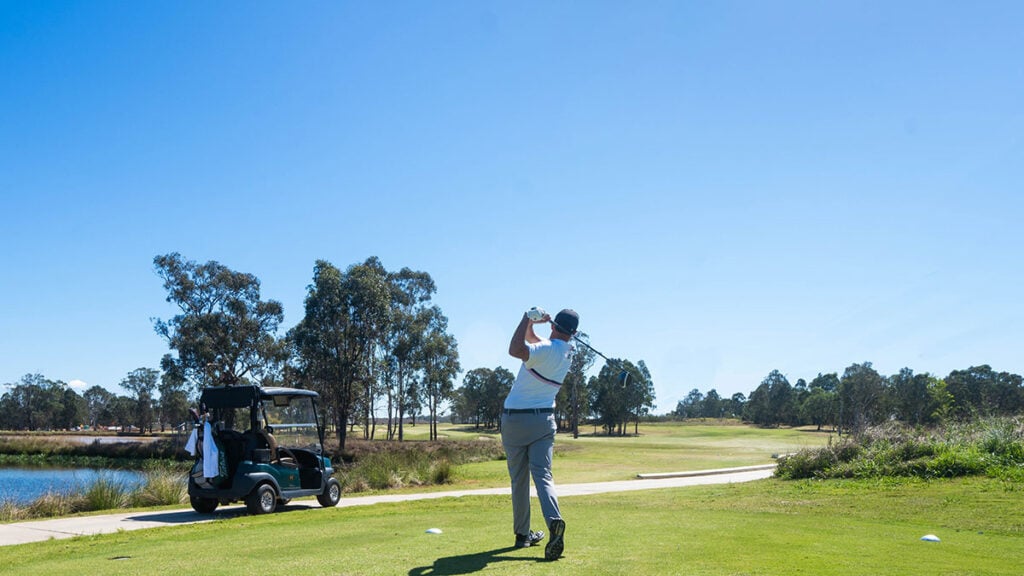Whether you’re a club golfer or a tour pro, you can always pick up tips and ideas by observing other golfers around you. Sometimes that might be on the driving range, other times on the golf course.
I remember being paired with Ian Woosnam in Spain almost 20 years ago in a tournament on the European Tour. We were playing quite a hilly golf course with slopes surrounding most greens. Ian wasn’t having the best of ball-striking days (highly unusual for him), which meant he had plenty of chip shots throughout the round. Several were with the ball above his feet and his touch on those was exquisite, almost holing out every time. After a while, I started taking notice of his action and how his lower body led the club through the ball. After the round, I asked Ian about it, and he said he loved having a chip or full shot with the ball above his feet. It helped round out his action and he felt he couldn’t hit a bad shot.

I thought about what I’d seen that day and started using that feeling of allowing my hips and legs to control the motion in my chip shots, with my hands and club simply along for the ride. Immediately my distance control improved and even though chipping wasn’t a weakness for me, it added another element for different shots on the golf course.
There have been other instances when I’ve watched players and seen something I liked the look of. I’d take it to the range to experiment with and see if it was something I could use. That’s the beauty of golf. It’s a never-ending learning curve. Now, some ideas work and some don’t so be careful because we can go off on tangents in that sense, and you might never see the light at the end of the tunnel. Having someone you can trust to talk to about your game is very useful in this situation, and typically your local PGA professional is the best person for this.
Ideally, the key is to know your own game and realise what your strengths and weaknesses are. Then, when you see someone performing a weakness of yours quite well, take notice, and if possible, talk to them about it. They may have a completely different thought or feeling about it that you hadn’t even considered. For example, if you struggle with putting, watch the good putters at your club and pick their brains about what they focus on. You’ll be surprised at the variety of answers. You may only choose one or two things to work on, but it could be just what you need.
There is a saying out on tour: “Don’t go out to dinner with poor putters.” They tend to have a negative attitude, which can infect your confidence. Instead, go out with or hang around the great putters. I loved playing with Brad Faxon for this very reason. The rhythm of his stroke just seemed to rub off on me automatically.
So rather than seeing people’s faults, look for their strengths and perhaps it can become one of yours.
Read on for more from Nick O’Hern and Australian Golf Digest.




